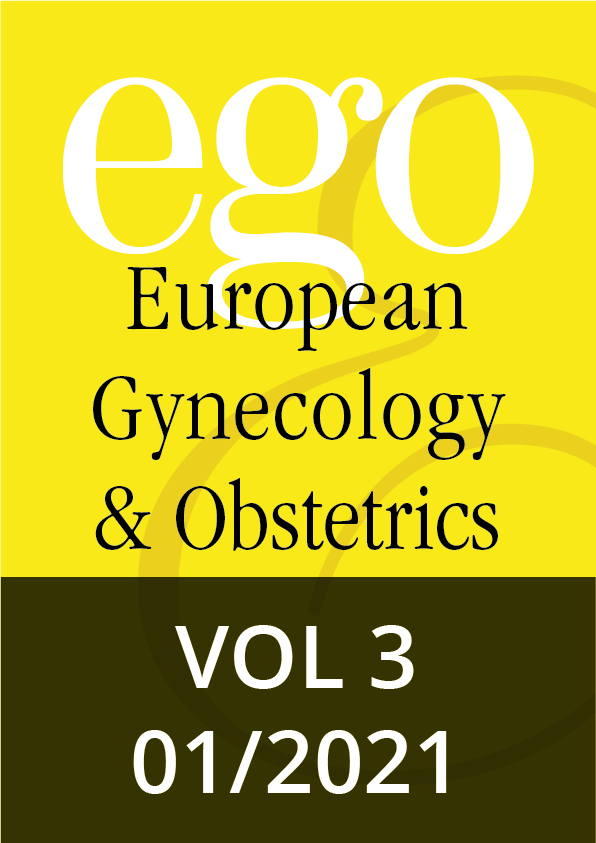Position paper, 002–012 | DOI: 10.53260/EGO.213011
Short reviews, 013–021 | DOI: 10.53260/EGO.213012
Short reviews, 022–028 | DOI: 10.53260/EGO.213013
Reviews, 029–033 | DOI: 10.53260/EGO.213014
Case reports, 034-036 | DOI: 10.53260/EGO.213015
Case reports, 037–039 | DOI: 10.53260/EGO.213016
Case reports, 040–043 | DOI: 10.53260/EGO.213017
Case reports, 044–047 | DOI: 10.53260/EGO.213018
Original articles, 048–053 | DOI: 10.53260/EGO.213019
Original articles, 054–057 | DOI: 10.53260/EGO.2130110
Women and children first: the importance of pertussis and influenza vaccinationin pregnant women and how to increase vaccine uptake
Abstract
Vaccination during pregnancy has been proven effective in protecting both pregnant women and their newborns from infectious diseases. An increasing number of countries have issued recommendations for the use of pertussis and influenza vaccines during pregnancy and are offering these vaccines free of charge. However, even in such countries, despite the demonstrated effectiveness and strong safety profile of maternal pertussis and influenza vaccination, vaccine uptake has remained suboptimal. This paper gives a succinct overview of the available evidence supporting maternal pertussis and influenza vaccination, summarizes the factors that can influence vaccine uptake during pregnancy and provides practical advice on how healthcare providers in an obstetrics setting can contribute to the successful implementation of maternal immunization programs. To help increase uptake, practitioners should recommend maternal pertussis and influenza vaccination to their patients during the first antenatal visit. They should give information about the effectiveness and safety of maternal immunization, and about the risk of infection and severity of the respective diseases in the absence of vaccination. Ideally, vaccines should be offered on-site during one of the routine antenatal visits, thereby maximizing convenience for the patient. Strategies to increase uptake will need to be tailored to the antenatal care model of the specific country but, regardless of the model, should aim to incorporate vaccination into standard antenatal care. To do so, healthcare professionals involved in the delivery of vaccines should be clearly identified and adequately trained, standing orders could be instituted (allowing midwives and obstetric nurses to administer vaccines), reminders about vaccination could be added to the patient’s medical records and the patient’s vaccination status should be well documented. These measures could help establish maternal immunization as the norm in the general population and increase acceptance and uptake.
Keywords: gynecologists, Maternal immunization, midwives., obstetricians, Tdap
Citation: Mukherjee P.,Mihalyi A.,Ralph K.,H Beigi R.,R. Genazzani A.,E Jones C., Women and children first: the importance of pertussis and influenza vaccinationin pregnant women and how to increase vaccine uptake, EGO European Gynecology and Obstetrics (2021); 2021/01:002–012 doi: 10.53260/EGO.213011
Published: January 1, 2021
ISSUE 2021/01

Position paper, 002–012 | DOI: 10.53260/EGO.213011
Short reviews, 013–021 | DOI: 10.53260/EGO.213012
Short reviews, 022–028 | DOI: 10.53260/EGO.213013
Reviews, 029–033 | DOI: 10.53260/EGO.213014
Case reports, 034-036 | DOI: 10.53260/EGO.213015
Case reports, 037–039 | DOI: 10.53260/EGO.213016
Case reports, 040–043 | DOI: 10.53260/EGO.213017
Case reports, 044–047 | DOI: 10.53260/EGO.213018
Original articles, 048–053 | DOI: 10.53260/EGO.213019
Original articles, 054–057 | DOI: 10.53260/EGO.2130110
